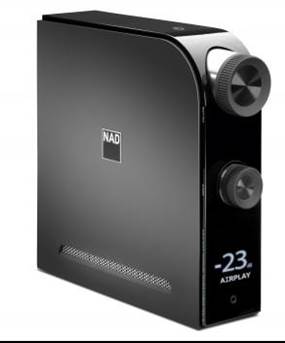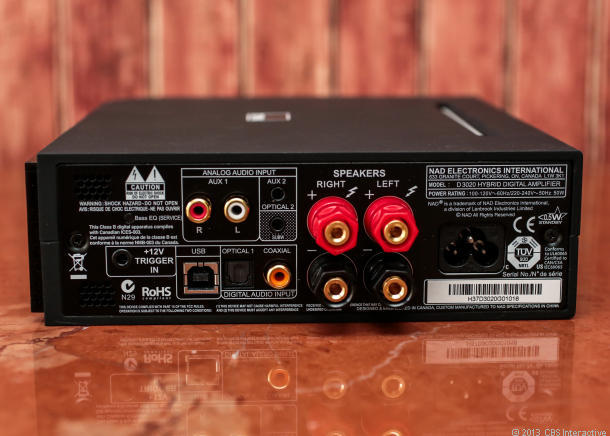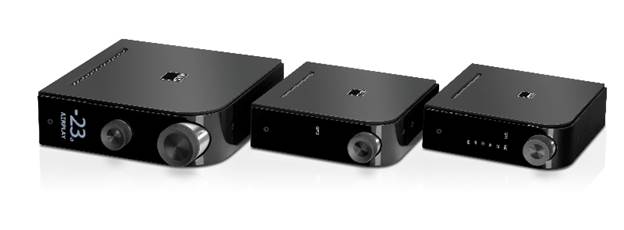Digital Music System NAD D 7050 Review (Part 1)
You
may think you’ve already seen the D 7050 gracing our review pages in recent
months, as it looks strikingly similar to NAD’s D 3020 amp and D 1050 DAC, both
of which we tested before. The D 7050 here, however, is an altogether more
thorough package, and employs NAD’s Direct Digital circuitry, handed down from
the company’s high-end Masters Series. This circuit ensures all preamp
functions are performed in the digital domain, which NAD says helps keep unwanted
noise low.

NAD D 7050
Being
a digital amp means that the D 7050 is bereft of analogue inputs, but digital
inputs are well served across four S/PDIF sockets shared over coaxial and
optical, alongside USB and Ethernet ports. Output sockets include a single set
of loudspeaker terminals, a headphone jack and an analogue preamp out, which
can also be configured to feed a subwoofer via RCAs. As with any streamer worth
its saline, the NAD accepts the usual range of file types including
FLAC/WAV/ALAC and can handle fi les up to 24-bit/192kHz via its digital inputs
and 96kHz via USB, which is also the maximum that I manage to achieve over
Wi-Fi.
Speaking
of wireless, the NAD welcomes streams served via UPnP/ DLNA networks, Apple’s
AirPlay and Bluetooth (via the aptX codec). There’s no dedicated internet radio
player installed, so you have to stream this from an external device, such as a
computer.

NAD D 7050 Behind
Physically
the D 7050 doesn’t look, feel or behave like most traditional hi-fi boxes, and
for this it should be commended for daring to be different. The way its digital
display rotates à la smartphone screen, to be legible when laid fl at or stood on
end, is plain cool.
In
the flesh the rubberised matt and contrasting reflective finish is classy, and its
two large rotary knobs (for volume and input) are smoothly governed with just
the right amount of resistance. Underneath its dextrous finish, the case is
actually made from plastic, although it feels genuinely solid, more so than
many steel boxes in the same price bracket. Using a plastic case that doesn’t
block RF also means NAD can hide the unit’s wi-fi and Bluetooth antennas
inside, negating rear panel clutter of dongles and transmitters.
Setting
up the D 7050 is a breeze. There’s no on/off switch on the unit, so the
matching remote is called upon to bring the screen to life. Getting it on to a
home network simply involves pressing the unit’s rear panel WPS button, and
likewise on a home router (in my case a BT Home Hub) followed by a few seconds
of waiting while the two find each other and the wi-fi symbol becomes static.
Operation via NAD’s dedicated app is equally simple to get going. Once
downloaded, simply select your device and enter your wi-fi key to be given
access to all of the D 7050’s features, ranging from selecting inputs to
specifying the sub’s crossover point. Unlike apps from the likes of Cambridge
Audio and Linn, NAD’s app cannot access or initiate playback from a music
library on your network, so playback needs to be started at the client end of
things (for example your computer, smartphone or tablet), and then controlled
using the app to select the input you require and adjust the volume.

NAD D 7050
|
Specifications
·
Price: $1.304
·
Product: NAD D 7050
·
Origin: Canada/China
·
Type: Network streamer/amplifier
·
Weight: 2.2kg
·
Network music playback (wi-fi. AirPlay, Ethernet and Bluetooth)
·
50W digital Class D amplifier
·
USB and S/PDIF inputs
·
Support for ALAC/WAV/FLAC/MP3 up to 24-bit/192kHz (96kHz over
USB)
|